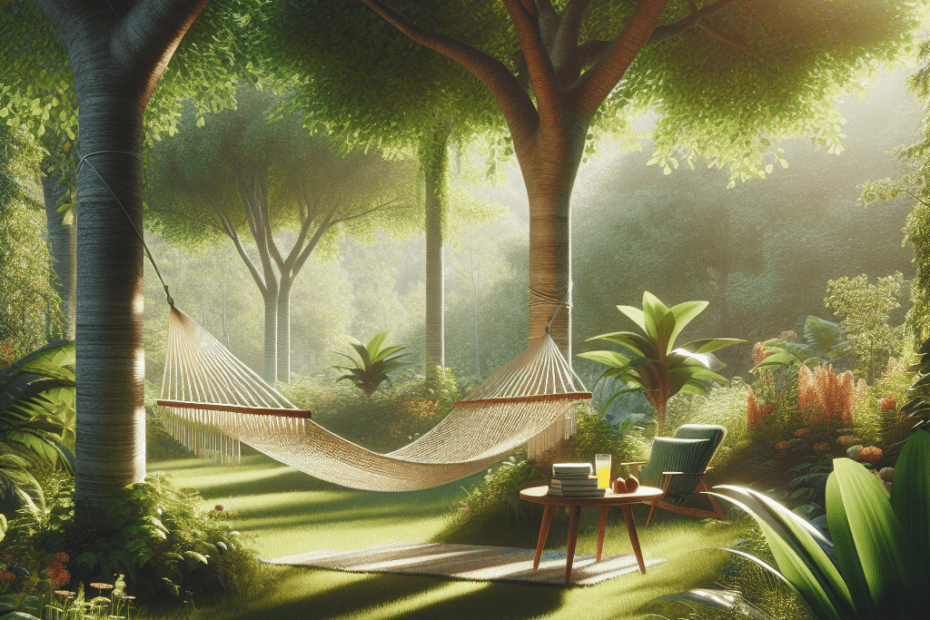“`html
Introduction
In today’s fast-paced world, everyone is looking for ways to unwind and escape the everyday hustle. Creating a space where they can relax and recharge is essential for maintaining mental well-being. One of the most effective ways to accomplish this is by incorporating relaxing outdoor hammocks into their outdoor living area. With various styles and materials available, hammocks can transform any backyard into a tranquil retreat where stress simply melts away.
The Benefits of a Relaxing Outdoor Hammock
Hammocks not only provide a comfortable spot for lounging but also offer several health benefits. According to a survey by the American Institute of Stress, around 77% of people experience stress that affects their physical health. Relaxing outdoors can mitigate this by lowering stress levels and improving mood. A well-placed hammock, therefore, becomes a vital component of an outdoor space that promotes relaxation.[1]
Choosing the Right Hammock
There are different types of hammocks to suit various needs. When choosing a relaxing outdoor hammock, people should consider their space, style, and personal preferences.
- Fabric Hammocks: Often made from cotton or polyester, these are suitable for comfort and come in vibrant patterns.
- Rope Hammocks: Typically made from cotton or synthetic rope, these offer a traditional look and provide excellent airflow.
- Camping Hammocks: Made from lightweight nylon, these are portable and ideal for temporary setups.
Factors to Consider
Before purchasing a hammock, certain factors should be taken into account. The size of the space available, weight capacity, and whether they need a stand are important aspects. Additionally, the climate of their region may influence the material choice, as some fabrics are more durable in various weather conditions. For instance, polyester is more fade-resistant and dries quickly, making it a better option for humid environments.
Enhancing the Hammock Experience
Once the perfect hammock is chosen, enhancing its surroundings can create an inviting atmosphere. Here are some ways they can make their relaxing outdoor hammock space more enjoyable:
- Add Greenery: Surrounding the hammock with plants or a small garden can enhance relaxation and natural beauty.
- Lighting: Soft outdoor lights or solar lanterns can add warmth and a magical feel to evening relaxation.
- Cushions and Throws: Additional comfort can be provided with outdoor pillows and cozy blankets.
- Privacy Options: Adding a privacy screen or strategically placing the hammock can shield it from neighbors.
Statistics on Outdoor Relaxation
Adding a hammock to their outdoor space isn’t just for leisure; it’s backed by science. According to the Outdoor Industry Association, over 49% of Americans participate in at least one outdoor activity annually, with a significant portion noting improved mental clarity and reduced stress levels.[2] In another survey by Better Homes & Gardens, 67% of people said they found relaxation spaces in their homes, including outdoor spaces, important for their mental health.[3]
Considerations for Safety
Safety is paramount when setting up a hammock. Always ensure they check the weight capacity and secure the hammock properly, whether attached to trees or a stand. Ensuring the space underneath is clear of obstacles is also crucial should anyone fall.
| Material | Pros | Cons |
|---|---|---|
| Cotton | Comfortable, breathable | Less durable outdoors, prone to mold |
| Polyester | Weather-resistant, fade-resistant | Less soft than cotton |
| Nylon | Lightweight, quick-drying | Can feel slippery, lacks traditional look |
Key Takeaways
- Relaxing outdoor hammocks provide a comfortable way to reduce stress and improve mood.
- Choosing the right hammock involves considering space, material, and personal preferences.
- Enhancements such as greenery, lighting, and cushions can elevate the outdoor hammock experience.
- Safety precautions should always be a priority when setting up a hammock.
Frequently Asked Questions (FAQ)
- What type of hammock is best for outdoor use?
Polyester and rope hammocks are generally more durable for outdoor use due to their weather resistance.
- How much space do I need for a hammock?
Hammocks typically require about 10 to 15 feet of space for secure hanging, depending on their size.
- Can hammocks be left outside in the rain?
While some materials like polyester are weather-resistant, it’s best to store hammocks in a dry place during heavy rains or winter to prolong their life.
- How much weight can a hammock hold?
Hammocks vary in capacity, but most can hold between 250 to 450 pounds. Always check the manufacturer’s guidelines.
- Are hammocks good for sleeping?
Hammocks can be very comfortable for sleeping, though it depends on personal preference. Some people find the swaying motion helps them fall asleep faster.
“`
—
Sources:
[1] American Institute of Stress
[2] Outdoor Industry Association
[3] Better Homes & Gardens
